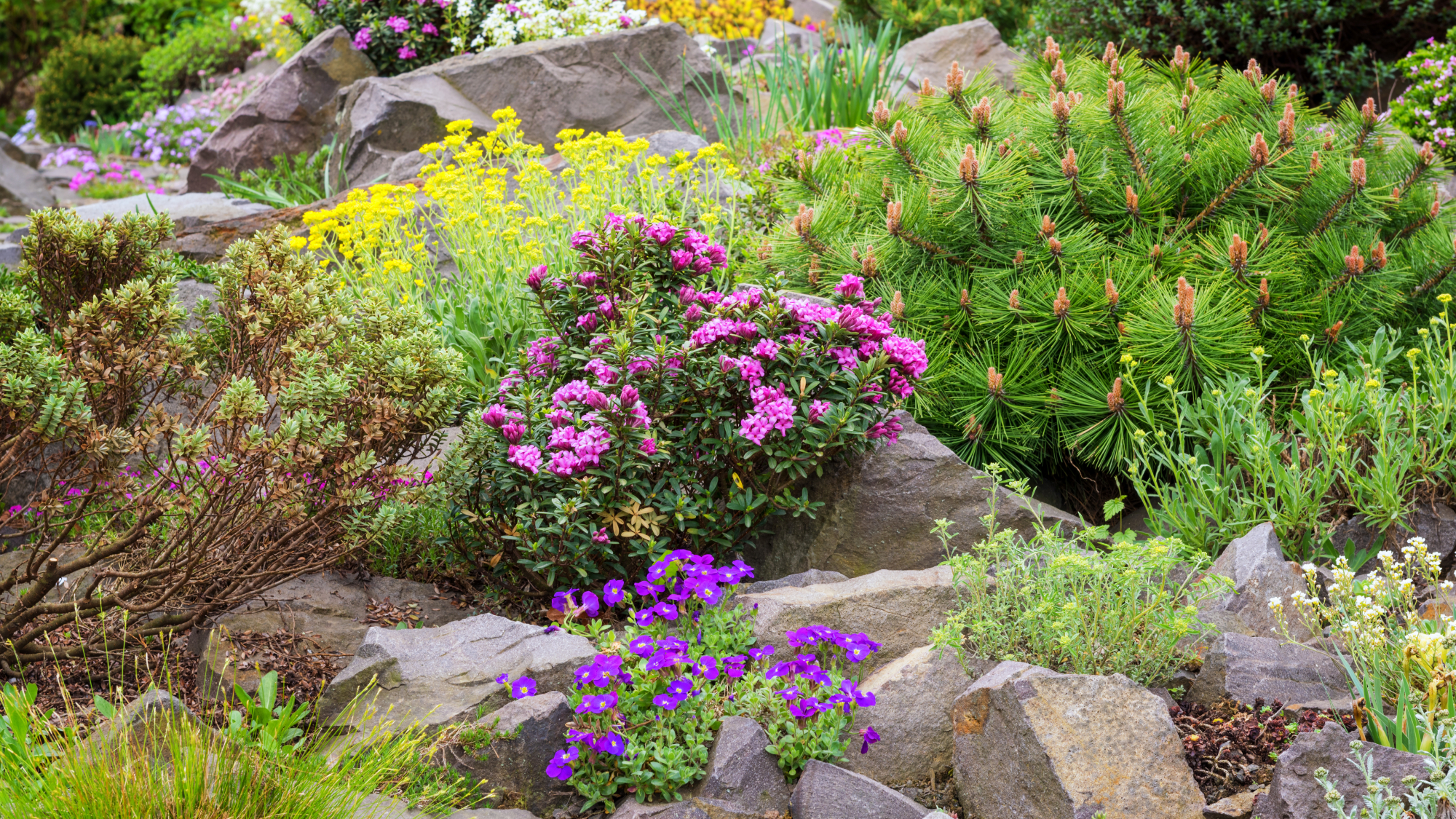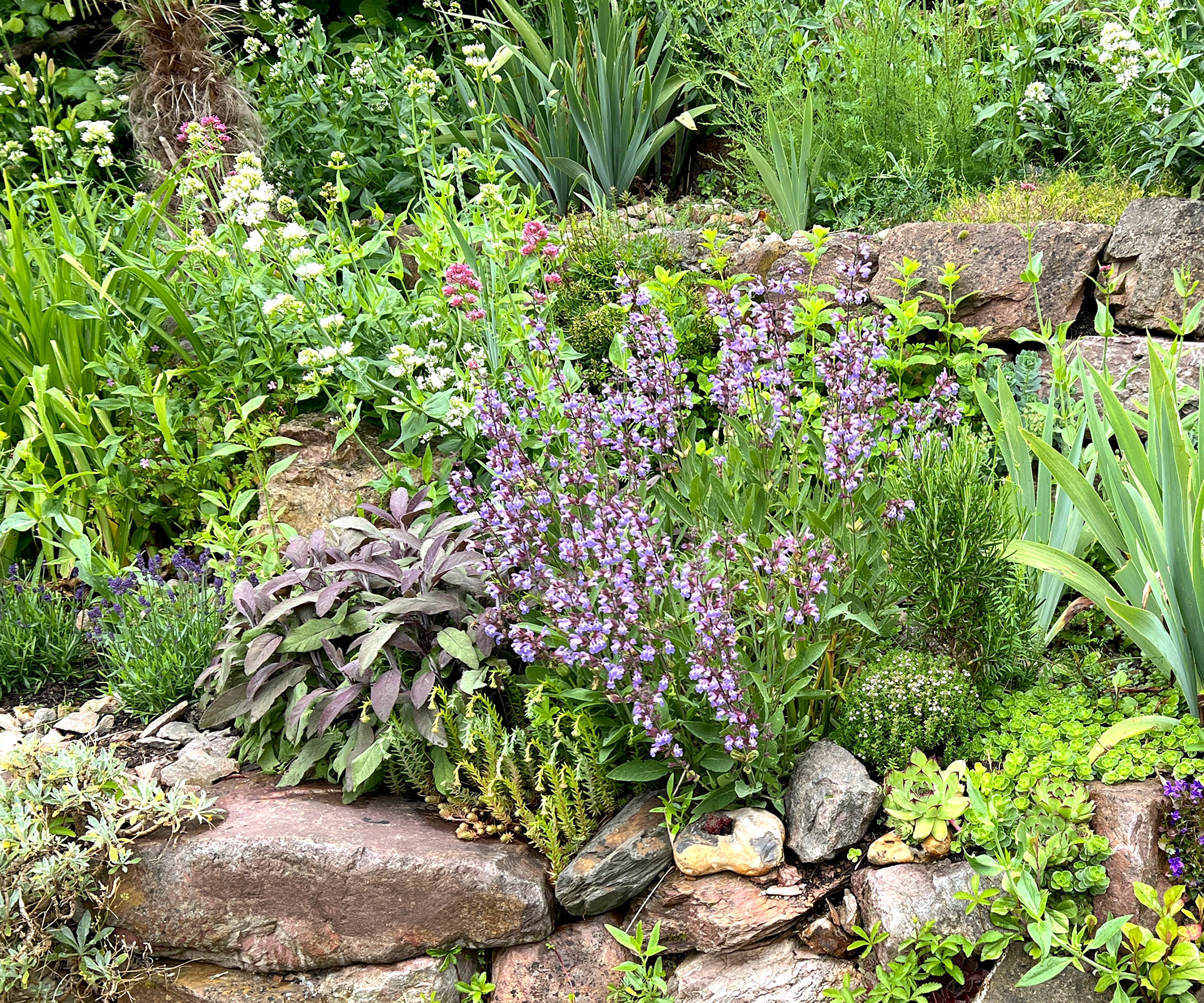Soil Not Deep Enough? These Shallow-Rooted Plants Can Thrive With Barely Any Dirt
Think you can't grow a garden because you barely have any soil? Think again! These shallow-rooted plants are perfect for landscapes that lack soil depth.


Not all garden soil is dark and deep. A garden or backyard may have sections of shallow soil. These are areas where something impermeable lies close below the thin soil layer, restricting the plant roots from pushing their way down. This can be bedrock, tree roots, or cement, for example.
But does the shallow soil mean you can’t grow a garden there? Sometimes. But often you can if you find the right shallow-rooted plants. I've compiled a list of some of the best plants with shallow roots to help you solve is frustrating garden problem.
Like finding plants that thrive in poor soil, trying to pick out plants for shallow soil can be hard. But I'll share some expert tips about how to successfully grow a garden in shallow soil and some of my favorite varieties for areas with almost no soil.
What Is Shallow Soil?
Shallow garden soil is exactly what it sounds like. When you try to press a shovel into the earth, it doesn't go in very far before something hard under the soil stops it. There is no official depth that classifies soil as “shallow,” but if the layer of soil is less than 1.5 feet (0.5 m) deep, it will certainly cause problems.
So what’s under the shallow soil in your garden? It could be a variety of things, like rocks, cement, bedrock, or even old pavement. If you can’t get a shovel in deep, you know that plant roots will not be able to penetrate either – and that’s the real issue. If root growth is impeded, your plants cannot take up the water and nutrients they need to survive and thrive.
So unless you want to truck in a huge load of topsoil or spend tons of time building a sustainable garden soil from almost nothing, your best bet is to find plants that can grow in shallow soil.

Why Plant Choice Matters
Shallow root plants are plants with naturally short roots that can grow in areas with little to no soil. Though these plants would have short roots even if planted in deep soil, they are the ideal solution for areas with minimal soil. They are the only plants that will be happy in a part of the yard with low soil levels.
Sign up for the Gardening Know How newsletter today and receive a free copy of our e-book "How to Grow Delicious Tomatoes".
Shallow-rooted plants have adapted to survive in a thin layer of soil. They have developed longer, more abundant root hairs that efficiently absorb nutrients and water from the topsoil layer.
Many of these plants are also great for arid areas, where only the top of the soil will get adequate water. And finally, given the roots proximity to the surface, these plants usually grow more quickly than seeds planted deeper.
True shallow-rooted plants have evolved to obtain the nutrients and water they need from the topsoil. Yes, that makes them perfect for shallow root areas, but that also means they are great additions in a garden with regular soil. You can place them near deep-rooted plants and they will grow well without competition. This creates a diverse garden that's low-maintenance and beautiful.

Best Shallow-Rooted Plants
You can find many different types of beautiful and easy to grow plants for shallow soil. Here are some of the best options for a variety of garden needs.
- Ground Covers: Succulents, like creeping sedums, make great shallow rooted ground cover plants. Or you can plant creeping phlox for stunning spring blooms.
- Herbs: Shallow-rooted herbs include oregano, thyme, and lavender. Add an aromatic element that's also edible with one of these plants for shallow soil.
- Perennials: If you're looking to fill an area that lack soil with perennial plants, try coneflowers or hardy geraniums. They can tolerate difficult growing conditions like low soil and provide years of blooms.
- Vegetables: Leafy greens like lettuce and spinach grow quickly and have shallow roots. Or you can also opt for chives and radishes. Believe it or not, big, gorgeous butternut squash is also a great options for a shallow soil site.
- Ornamental Grasses: If you want to grow ornamental grasses in an area with shallow soil, go for Japanese forest grass. It’s the best for this purpose. A couple other grasses with shallow roots include blue fescue and fountain grass.
- Shrubs: Evergreen shrubs with shallow roots include boxwoods, azaleas, yew, and holly bushes. Also, try hardy hydrangeas. Their beautiful flowers can make any garden shine.

Tips for Success in Shallow Soil
When a part of the garden has shallow soil, plants growing in these areas may deplete the available water quickly. To combat this, water more frequently. A drip irrigation system, like this one from Home Depot, is a great way to keep plants thoroughly hydrated. Otherwise check daily to see how dry the area is.
Also, regularly add organic material to the site to provide additional nutrients and build up the soil that is there. Organic compost, which you can get from Espoma on Amazon, or make yourself at home works well for this. It’s better to layer it on top of the soil than to dig it in.
After adding compost, top the soil with mulch. This can be organic mulch, which you can also get on Amazon, or it could also be wood chips or chopped leaves from other parts of your garden. Mulching locks in moisture and protects the shallow roots. Keep your eye out for weeds and remove them as soon as possible. They compete with shallow-rooted plants for water and nutrients.
If your soil is extremely shallow and none of these plants or techniques are working out for you, then it might be time to add some raised beds. Senior Editor Liz Baessler swears by her Vego Garden beds, which come in a wide variety of sizes, shapes, and colors to suit any garden.

Teo Spengler is a master gardener and a docent at the San Francisco Botanical Garden, where she hosts public tours. She has studied horticulture and written about nature, trees, plants, and gardening for more than two decades, following a career as an attorney and legal writer. Her extended family includes some 30 houseplants and hundreds of outdoor plants, including 250 trees, which are her main passion. Spengler currently splits her life between San Francisco and the French Basque Country, though she was raised in Alaska, giving her experience of gardening in a range of climates.